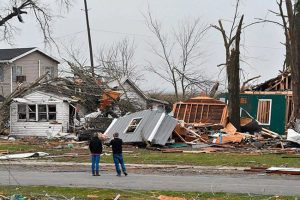If your home has been damaged by fire, one of the most important steps in the insurance claims process is documenting your personal property. This includes creating an inventory of your belongings, taking photos of the damage, and providing proof of ownership and value. By properly documenting your personal property, you can help maximize your insurance claim and prevent insurance companies from taking advantage of homeowners.
Here are some tips and advice for documenting your personal property after a fire:
Table of contents
Create an Inventory
When faced with the daunting task of creating an inventory of your personal property after a fire, it’s essential to utilize all available resources. Sometimes, memories can be clouded by the chaos of the event, making it challenging to recall every item lost or damaged. In such cases, it’s beneficial to cast a wide net in your search for documentation.
Consider reviewing old photos or videos taken inside your home, as these can serve as visual records of your belongings. Additionally, review your Amazon purchase history, email receipts, or any other digital records of purchases. These sources can provide valuable insights into items that may have otherwise slipped your mind. By leveraging these resources, you can enhance the accuracy and completeness of your inventory, ensuring that no item is overlooked.
Take Photos (lots of them)
Capturing detailed photographs of the damage is crucial for substantiating your insurance claim after a fire. Ensure that your photos are clear, well-lit, and capture the extent of the damage from various angles. Focus on specific details and areas of damage, including structural elements, personal belongings, and any valuable items affected.
In addition to documenting the damage, consider taking “before” photos of your home and possessions whenever possible. These comparative images can provide compelling evidence of the extent of the loss and help support your claim. Remember to store your photos securely, either digitally or in hard copy, to ensure accessibility throughout the claims process.
Gather Receipts and Appraisals
In the aftermath of a fire, gathering receipts and appraisals can be instrumental in accurately assessing the value of your personal property. Begin by scouring your records for receipts related to major purchases, such as furniture, appliances, electronics, and jewelry. These receipts serve as tangible proof of ownership and can help establish the replacement cost of your belongings.
Additionally, if you possess high-value items such as artwork, antiques, or collectibles, locate any appraisals or valuations you may have obtained. These documents provide independent assessments of the items’ worth and can substantiate their value to your insurance company. Be diligent in your search for documentation, as every receipt and appraisal contributes to building a comprehensive case for your insurance claim.
Use Online Resources
In today’s digital age, an array of online resources is available to assist homeowners in documenting their personal property after a fire. Explore home inventory apps and software that streamline the process of cataloging belongings, allowing you to input item descriptions, values, and even photos directly into a digital database.
These tools offer convenience and organization, ensuring that your inventory is thorough and accessible when needed. Additionally, leverage online valuation tools and databases to estimate the value of items for which you may lack documentation. While not as comprehensive as receipts or appraisals, these resources can provide valuable insights into the replacement cost of common household items.
Be Thorough
When documenting your personal property after a fire, meticulousness is key to ensuring no item is overlooked. Begin by systematically surveying each room of your home, carefully noting every belonging, no matter how small or seemingly insignificant. From clothing and kitchenware to electronics and furniture, account for every item that has been affected by the fire.
To aid in this comprehensive inventory process, consider revisiting old photographs, videos, or home tours captured before the fire. These visual records can jog your memory and help identify items that may have otherwise slipped your mind. Take your time and methodically document each item, noting its condition, approximate age, and estimated value.
Seek Professional Help (if necessary)
Navigating the aftermath of a fire can be overwhelming, particularly when faced with the daunting task of documenting personal property for an insurance claim. If you find yourself struggling to compile a thorough inventory or lacking the expertise to assess the value of high-ticket items, consider seeking professional assistance.
Public Adjusters: Public adjusters are independent professionals who specialize in advocating for policyholders during the insurance claims process. They possess comprehensive knowledge of insurance policies, claims procedures, and property valuation techniques, making them invaluable allies in maximizing your insurance settlement. By enlisting the services of a public adjuster, you can benefit from their expertise in documenting personal property, negotiating with insurance companies, and advocating for your best interests.
Professional appraisers and inventory specialists are also available to provide support during this challenging time. These experts can meticulously catalog your belongings, provide accurate valuations, and ensure your insurance claim is comprehensive and compelling.
While enlisting professional help may incur additional costs, the peace of mind and potential for a more substantial insurance settlement can outweigh the expense. Ultimately, investing in professional assistance can expedite the claims process and help you achieve a fair and equitable resolution with your insurance provider.
Conclusion
In conclusion, documenting your personal property after a fire is essential for maximizing your insurance claim and protecting your rights as a homeowner. By following these tips and advice, you can create a thorough inventory of your belongings, provide proof of ownership and value, and ensure that you receive the full benefits of your insurance policy.
Remember, it’s your personal property and your insurance policy, and you have the right to demand that your insurance company honor its obligations under the policy. Don’t let the insurance company take advantage of you – take charge of the situation and protect your property and your rights.
FAQ
If memory fails, consider reviewing old photos, videos, or digital records of purchases to aid in creating a comprehensive inventory of personal property.
Comparative images of your property before and after the fire can provide compelling evidence of the extent of the loss, aiding in substantiating your insurance claim.
Gather receipts for major purchases and appraisals for high-value items like artwork or jewelry to establish ownership and replacement costs.
Explore home inventory apps and online valuation tools to streamline the documentation process and estimate the value of items for which you lack documentation.
If you’re struggling to compile a thorough inventory or assess the value of high-ticket items, consider enlisting the help of public adjusters or professional appraisers.




